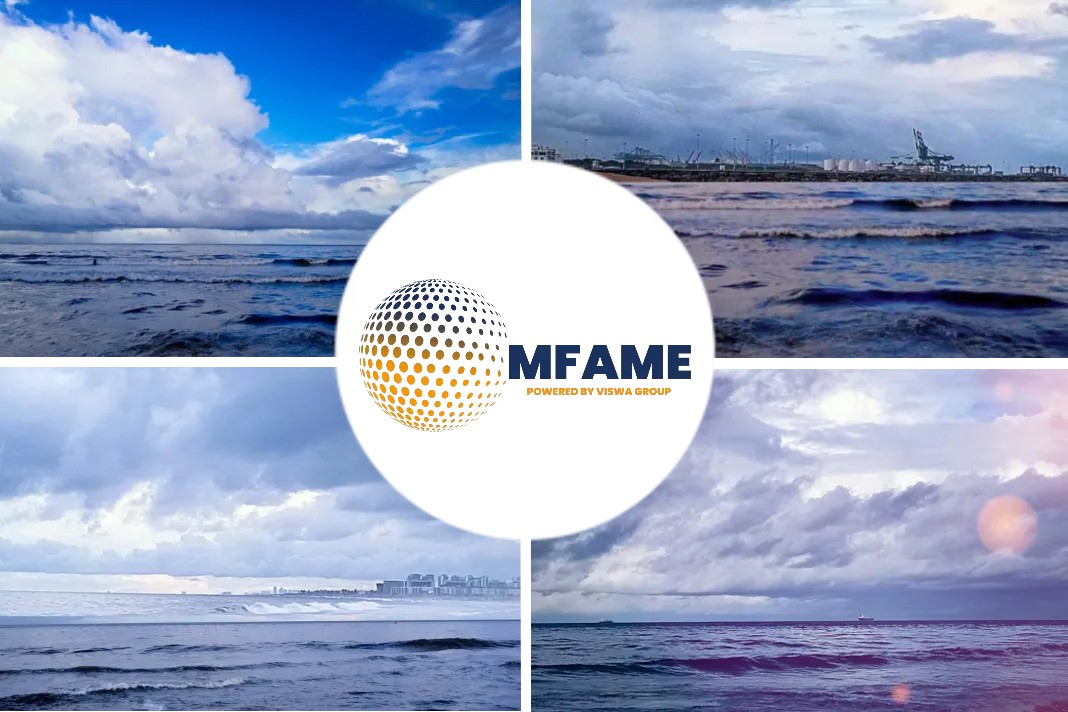According to Drewry’s survey, container shipping bunker adjustment factors (BAFs) will soar between 4Q 2019 and 1Q 2020, and will be very volatile in the first half of 2020, reports Lloyd’s Loading List.
Low-sulphur price tracker?
According to Drewry, although better information are available, many cargo owners are still uncertain about the impact of IMO 2020 on their freight costs.
It also predicts BAFs will soar from Q4 2019 and be very volatile in the first half of 2020, before falling in 2021.
To clarify the uncertainty, container shipping analyst and data expert Drewry is launching a ‘low-sulphur bunker price tracker’.
Cost of new LSFO in 2020
Drewry said for several years, that one of the biggest and hardest questions to answer in international shipping has been: what will be the new low-sulphur fuel cost from 2020?.
But it said shippers, forwarders and carriers are getting a better idea of costs and data sources.
No denial of extra cost
Drewry noted that everybody agreed that there will be a large, extra cost for the industry and its users.
But shippers surveyed by Drewry on the IMO 2020 issue admitted that
- The data is patchy and confusing and
- Were very uncertain about the impact of IMO 2020 on their freight costs.
IMO Cost Impact Calculator
As a result of this, Drewry developed an IMO Cost Impact Calculator, but said “this required us to make our own forecast of the 2020 cost of low-sulphur fuel, because there is no established price in the market for the new fuel. This is changing.”
In July and August, early indications of prices for low-sulphur fuel oil 0.5% (0.5S) compliant with the IMO 2020 rule showed that the new fuel costs about 30% more than the current, high-sulphur IFO380 fuel at Asian ports which have started selling it.
This price is based on actual bunkering transactions for ships which trade with Chinese ports, where the 0.5S requirement is already implemented. The low-sulphur 0.5S price in the major port of Singapore is about $560 per tonne.
Be watchful says Drewry
However, Drewry said it was asking customers “to be careful when using these early price indications, because the demand for low-sulphur fuel will increase considerably by November/December and market conditions will be very different then”.
Bunker Price Tracker
To assist shippers, forwarders and carriers who need to revise their bunker charges before and after the switch to low-sulphur fuel, Drewry started a publicly-available Low-sulphur Bunker Price Tracker.
This will be updated every quarter and also in December, when many contracts will require data on the new fuel cost.
Bunker Adjustment Factors
“Contractually, the ability of shippers and providers to adjust their Bunker Adjustment Factors at an appropriate time towards the end of 2019 – various switching dates can be negotiated – and at a fair cost is a top priority for the next few months,” Drewry noted.
“Shippers who have redefined their BAFs and their bunker indexing mechanism to take into account the IMO 2020 change have nearly always agreed that carriers need to be compensated for the price differential between low-sulphur and high-sulphur fuel – even though some 5% of total capacity is equipped with scrubbers. We believe that the chances are that low-sulphur bunker prices will, after increasing in 2020, fall in 2021 and 2022, as the initial price premium decreases.”
Major indirect repercussions
But Drewry said there will be several major indirect repercussions from the switch to low-sulphur fuel regulations:
- Shippers will pay a lot more attention and scrutiny to the Bunker Adjustment Factors than in the past.
- Smaller ships – which tend not to be equipped with scrubbers or with efficient engines – will be shunned by carriers even more than in the past.
- Some aggregate ship capacity will be cut (scrapped) and shipowners will incur capital losses on some of their now-obsolete vessels, built at a time when pollution regulations were lenient.
- Paradoxically, shipping lines with a high use of scrubbers will be able to continue to buy a lot of HSFO and will become more cost competitive and better insulated from low-sulphur price volatility than other shipping lines.
Did you subscribe to our daily newsletter?
It’s Free! Click here to Subscribe!
Source: Lloyd’sLoadingList

















